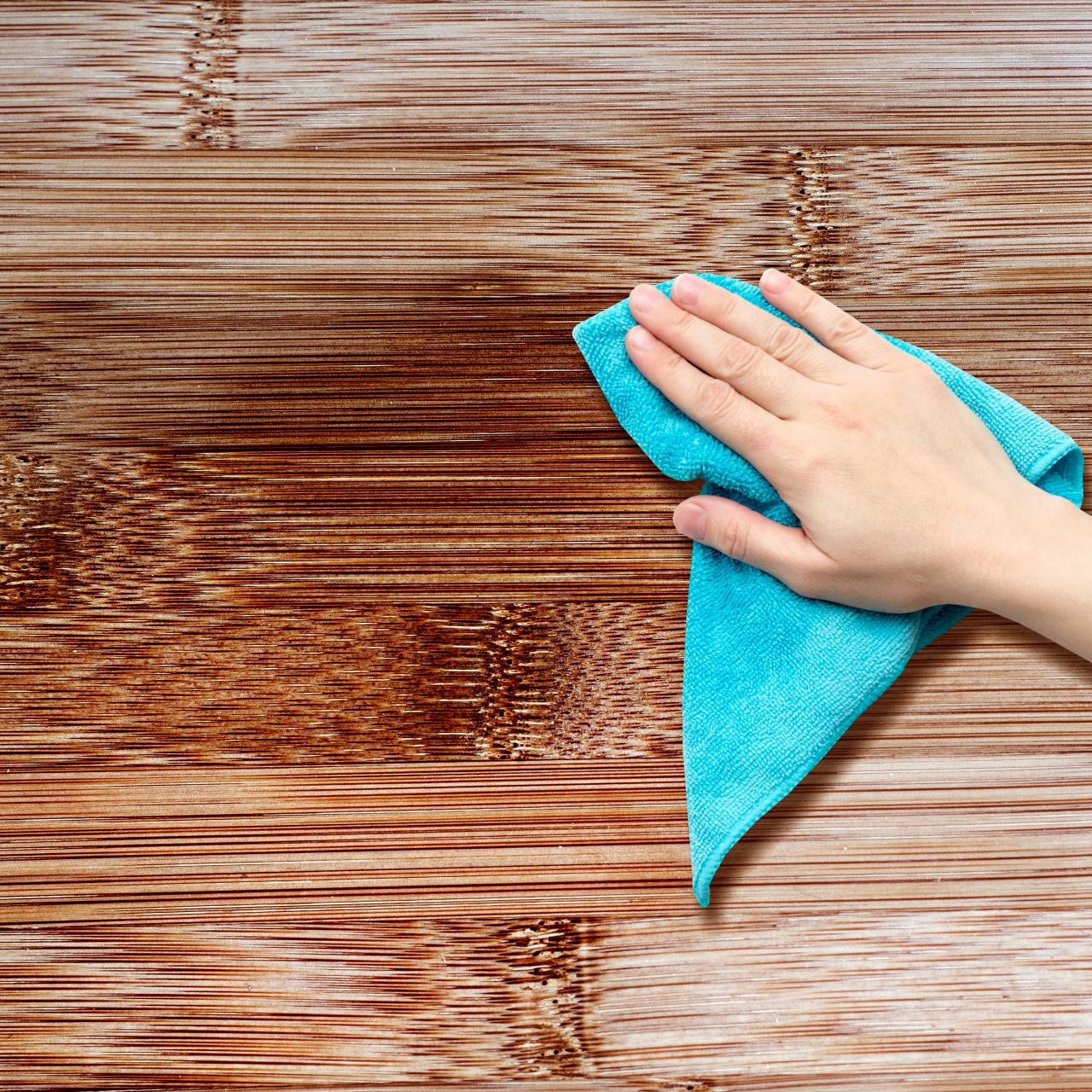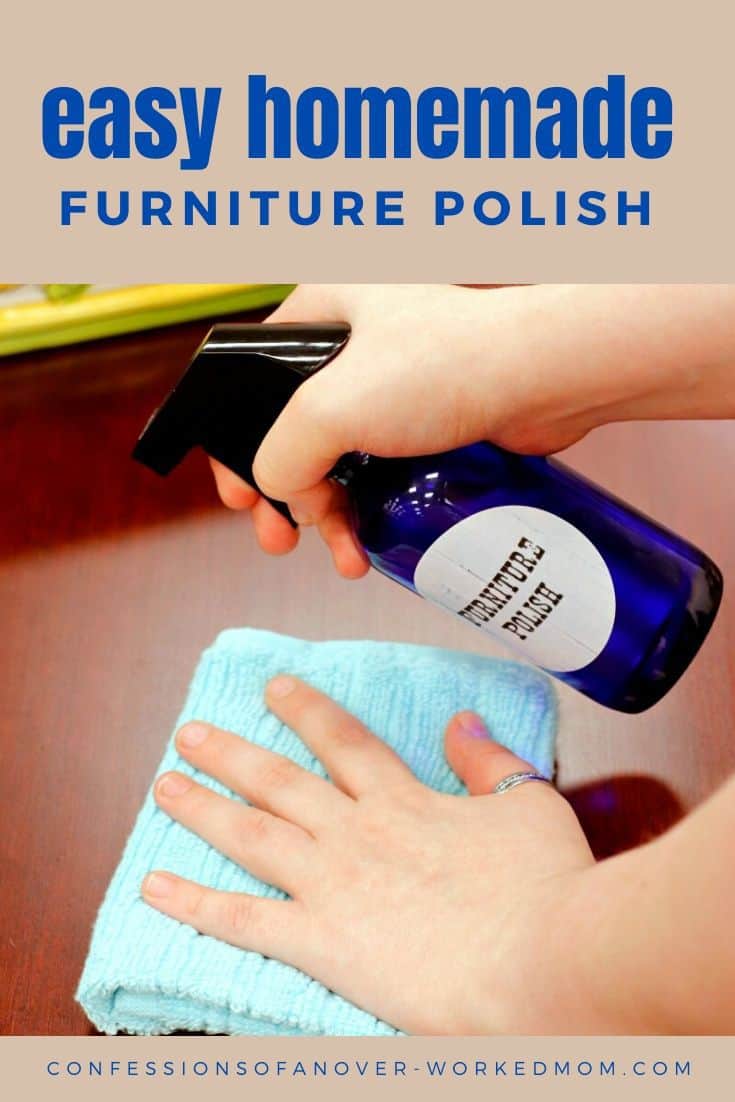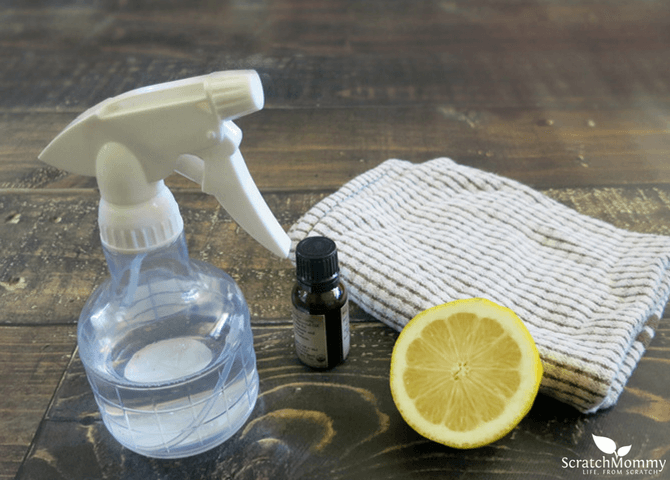To make furniture cleaner, mix equal parts water and vinegar in a spray bottle. Add a few drops of essential oil for fragrance.
Keeping your furniture clean and well-maintained is essential for a beautiful and welcoming home. Whether you have wooden, leather, or upholstered furniture, regular cleaning not only keeps it looking its best but also ensures longevity. Using a homemade furniture cleaner is a cost-effective and eco-friendly option that is gentle yet effective.
By following a simple DIY recipe using natural ingredients like vinegar and essential oils, you can create a cleaning solution that is safe for your furniture and your family. Let’s explore some easy steps to make your own furniture cleaner and enjoy a fresh and clean living space.
Benefits Of Making Your Own Furniture Cleaner
When it comes to cleaning your furniture, making your own furniture cleaner can offer several benefits. Not only does it allow you to avoid harsh chemicals, but it also provides cost savings and customization potential, ensuring that your furniture cleaner is tailored to your specific needs.
Avoiding Harsh Chemicals
Making your own furniture cleaner gives you the opportunity to avoid harsh chemicals that are often found in commercial cleaners. Harsh chemicals can cause skin irritation and release harmful fumes, which can be particularly unsafe if you have children or pets around.
Cost Savings
By making your own furniture cleaner, you can save money in the long run. Many household items, such as vinegar, baking soda, and essential oils, can be used to create effective and economical furniture cleaners, eliminating the need for expensive commercial products.
Customization Potential
One of the main benefits of making your own furniture cleaner is the customization potential it offers. You can tailor the cleaner to suit the specific needs of your furniture, whether it’s for wood, leather, or upholstery, by adjusting the ingredients and their proportions to ensure the best cleaning results.
Essential Ingredients For Diy Furniture Cleaner
When it comes to creating your own furniture cleaner, it is essential to know the key ingredients that can make your furniture sparkle without harsh chemicals. The following ingredients are simple yet powerful in keeping your furniture looking its best.
White Vinegar
White vinegar is a versatile cleaning agent that can remove dirt and grime from various types of furniture surfaces.
Olive Oil
Olive oil is excellent for nourishing and adding shine to wooden furniture, restoring its natural luster.
Lemon Juice
Lemon juice not only cleans and disinfects but also leaves a refreshing citrus scent on your furniture.
Step-by-step Guide To Making Furniture Cleaner
Maintaining clean furniture is essential for a fresh and welcoming home ambiance. Crafting your own furniture cleaner is a cost-effective and eco-friendly way to keep your furniture looking its best. Follow this simple step-by-step guide to create a homemade furniture cleaner solution.
Gather Ingredients
Before you begin, gather the following ingredients to create your furniture cleaner:
- Vinegar
- Olive oil
- Lemon essential oil
- Water
Mixing The Cleaner Solution
Follow these steps to mix the furniture cleaner solution:
- Combine 1 cup of water and 1 cup of vinegar in a spray bottle.
- Add 1 tablespoon of olive oil and 10 drops of lemon essential oil to the mixture.
- Shake the spray bottle well to ensure all ingredients are thoroughly mixed.
Application And Usage Tips
Here are some tips for using your homemade furniture cleaner:
- Shake the bottle well before each use to ensure the ingredients are properly blended.
- Spray the cleaner onto a microfiber cloth, not directly onto the furniture, to avoid oversaturation.
- Test the solution on a small, inconspicuous area of the furniture before applying it to the entire surface.
- Gently wipe the furniture with the damp cloth, following the wood grain for optimal results.

Credit: www.hgtv.com
Cleaning Different Types Of Furniture
When it comes to maintaining the cleanliness of your furniture, using the right cleaner for different types of materials is essential. Cleaning Different Types of Furniture requires specific care to ensure that the surfaces are not damaged while effectively removing dirt and grime. Let’s explore the best methods for cleaning wooden furniture, leather furniture, and fabric upholstery.
Wooden Furniture
Cleaning wooden furniture is crucial to maintain its luster and longevity. Use a mixture of mild dish soap and warm water to gently wipe down wooden surfaces. Avoid using abrasive cleaners that could damage the finish. Implementing a regular cleaning routine for wooden furniture is essential for preserving its natural beauty and minimizing dust buildup.
Leather Furniture
Leather furniture requires special care to maintain its luxurious appearance. Use a mixture of mild soap and water to gently clean leather surfaces. Avoid using harsh chemicals or abrasive materials that can damage the leather. Applying a specialized leather conditioner can help keep the material supple and prevent cracking or drying out over time.
Fabric Upholstery
Fabric upholstery necessitates a different approach to cleaning due to its absorbent nature. Use a vacuum cleaner with an upholstery attachment to remove surface dust and debris. For light stains, a mixture of mild detergent and water can be gently applied with a soft cloth. Always check the manufacturer’s recommendations for specific cleaning instructions to avoid damaging the fabric.
Additional Tips And Tricks For Effective Furniture Cleaning
Cleaning your furniture regularly not only helps to maintain its appearance but also extends its lifespan. In addition to using homemade furniture cleaner, there are several additional tips and tricks you can follow for more effective furniture cleaning. By implementing these preventive measures, spot cleaning techniques, and dealing with tough stains, you can keep your furniture looking fresh and inviting for years to come.
Preventive Measures
To minimize the need for frequent cleaning, there are some preventive measures you can take to protect your furniture from dirt, stains, and wear and tear. These measures include:
- Using slipcovers or furniture protectors to shield your furniture from spills, pet hair, and direct sunlight.
- Placing coasters under glasses and hot pads under hot dishes to prevent water rings and heat damage.
- Regularly dusting and vacuuming your furniture to remove loose dirt and debris.
- Avoiding placing furniture near heating vents or radiators to prevent drying out the wood or fabric.
Spot Cleaning Techniques
Spot cleaning is an effective method to address small stains or spills promptly. Here are some spot cleaning techniques to keep in mind:
- Blot the stain immediately with a clean, absorbent cloth to soak up as much of the spill as possible.
- Always test any cleaning solution on a small, inconspicuous area of the furniture to ensure it does not cause discoloration or damage.
- Gently clean the stained area using a mixture of mild dish soap and warm water or a specialized upholstery cleaner. Use a soft cloth or sponge to avoid scratching the surface.
- After cleaning, blot the area with a clean, damp cloth to remove any residue and then allow it to air dry completely.
Dealing With Tough Stains
Sometimes, tough stains may require more intensive cleaning methods. Here’s how to tackle those stubborn stains:
- For oil-based stains such as grease or butter, sprinkle baking soda or cornstarch on the affected area and let it sit for a few minutes before vacuuming it off.
- For ink or wine stains, blot the area with a cloth soaked in rubbing alcohol. Make sure to test the alcohol on a hidden area first to avoid any damage.
- To remove water stains, gently rub the area with a mixture of equal parts vinegar and olive oil. Wipe off any excess with a clean cloth.
- If all else fails, consider consulting a professional furniture cleaner who can offer specialized treatments to effectively remove tough stains without damaging your furniture.
By following these additional tips and tricks, you can maintain the beauty and cleanliness of your furniture for years to come. Incorporate these preventive measures, spot cleaning techniques, and methods to deal with tough stains into your regular furniture cleaning routine for the best results.

Credit: confessionsofanover-workedmom.com
Common Mistakes To Avoid When Making Furniture Cleaner
When it comes to making your own furniture cleaner, it’s important to remember that not all DIY recipes are created equal. While it can be a cost-effective and eco-friendly alternative to store-bought cleaners, there are some common mistakes you should avoid to ensure the best results and protect your furniture from damage.
Using Incorrect Proportions
One of the most common mistakes people make when making furniture cleaner is using incorrect proportions of ingredients. It’s crucial to follow the recipe precisely to achieve the desired cleaning power without causing harm to your furniture. Using too much of a particular ingredient can lead to residue buildup, while using too little may not effectively remove dirt and grime.
When creating your furniture cleaner, make sure to measure each ingredient accurately. This not only ensures the right balance but also guarantees that you won’t waste any ingredients. Always refer to the recipe and double-check your measurements before mixing everything together.
Using Incompatible Ingredients
Another crucial mistake to avoid is using incompatible ingredients. Some cleaning agents can react negatively when combined, resulting in harmful fumes or even damage to your furniture’s finish. It’s important to research and understand which ingredients work well together and which should never be mixed.
For example, mixing vinegar with certain types of oils, such as lemon or orange oil, can cause the oil to break down and leave a greasy residue on your furniture. Similarly, combining bleach with ammonia can create toxic fumes that are harmful to both your health and your furniture.
Not Testing On A Small Area First
One mistake that many people overlook is not testing their homemade furniture cleaner on a small, inconspicuous area before using it on the entire piece. Different types of furniture finishes and materials may react differently to cleaning agents, and it’s essential to ensure compatibility before applying the cleaner to the entire surface.
To avoid potential damage, select a discreet spot, such as the bottom or back of the furniture, and apply a small amount of the cleaner. Observe the area closely for any adverse reactions, such as discoloration or surface damage. If there are no negative effects, you can proceed to clean the rest of the furniture confidently.
In conclusion, by avoiding these common mistakes when making your own furniture cleaner, you can ensure effective cleaning, protect your furniture from damage, and maintain its beauty for years to come.
Environmentally Friendly Furniture Cleaning Alternatives
Explore eco-friendly solutions for cleaning furniture by making your own natural cleaners. Blend ingredients like vinegar, olive oil, and essential oils for safe, effective cleaning options. Opt for sustainable practices to keep your furniture clean and the environment healthy.
Everyday furniture cleaning is necessary to maintain a clean and healthy living environment. When it comes to environmentally friendly options, there are several alternatives that are not only effective but also safe for your furniture, family, and the environment. Let’s explore some of these easy and natural furniture cleaning solutions!Baking Soda And Water Solution
Mix baking soda with water to create a mild yet effective furniture cleaner. This simple solution is perfect for removing stains, odors, and general dirt buildup from various furniture surfaces. It’s a gentle abrasive that can help lift away grime without causing damage.Tea Tree Oil And Distilled Water Spray
Create a natural cleaning spray by combining a few drops of tea tree oil with distilled water. This aromatic solution not only cleans but also acts as a natural disinfectant, keeping your furniture sanitized and free from harmful microbes.Hydrogen Peroxide And Baking Soda Paste
For tough stains and deep cleaning, blend hydrogen peroxide with baking soda to form a paste. This powerful combination is particularly useful for tackling stubborn grime on furniture surfaces. Apply the paste, let it sit for a while, then wipe it off for a deeper clean. Using these environmentally friendly furniture cleaning alternatives, you can keep your furniture looking its best while also being mindful of the impact on the environment. Incorporating natural cleaning solutions into your routine not only benefits the planet but also contributes to a healthier and safer home environment for your loved ones.
Credit: m.youtube.com
Frequently Asked Questions On How To Make Furniture Cleaner
How Do You Make Homemade Furniture Cleaner?
To make homemade furniture cleaner, mix equal parts vinegar and water in a spray bottle and gently wipe your furniture.
What Ingredients Can I Use To Clean My Furniture?
You can use simple ingredients like vinegar, water, lemon juice, and olive oil to clean your furniture effectively.
Can I Use Furniture Cleaner On All Types Of Furniture?
Yes, furniture cleaner can be used on various types of furniture such as wood, leather, and upholstery, but always test it in a small, inconspicuous area first.
How Often Should I Clean My Furniture With Furniture Cleaner?
It is recommended to clean your furniture with furniture cleaner once a month for regular maintenance and to keep it looking its best.
Conclusion
Making furniture cleaner at home is simple and effective. With just a few natural ingredients, you can create a powerful cleaning solution that is safe for both your furniture and the environment. By following the recipes provided, you can keep your furniture looking its best without the use of harsh chemicals.
Try these DIY cleaners today and see the difference for yourself.

